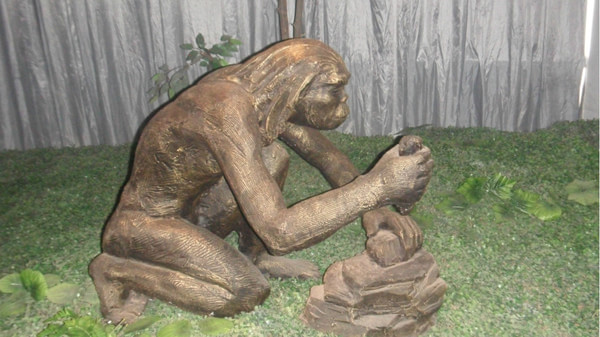History
Yunnan Province is one of mankind’s birthplaces. As early as 1.7 million years ago Yuanmou Man, known for his use of stone implements, lived in the region. By the time of the Shang and Zhou dynasties, the Warring States and the West Han Dynasty, the region was known for its great progress in agricultural production and for the high quality of its bronze wars.
Yuanmou Man

During the period 300-280 BCE, Marshal Zhuang Qiao of Chu State invated Yunnan Province. With his troops, he also brought advanced agricultural production techniques to the area. A century or so later, during the Qin Dynasty (221-207 BCE), a narrow road was built linking Yunnan Province closely with inland areas. In the period of the West and East Han dynasties, the central government set up local administrative offices. This strengthened the provinces contact with the Central Plains as far as politics, economy and culture were concerned. The close relationship was further strengthened during the Tang and Song dynasties. Important historical events – such as the uprising of the Nanzhao State, the prosperity of Dali State, the conclusion of the Ming Dynasty and the Revolution of 1911 – all brought about profound changes in the region.
Perhaps Yunnan Province is best known to outsiders as being part of the “South China Silk Road.” Existing hundreds of years earlier than the North China Silk Road, the South road through the rugged and rough terrain of the Yunnan linked the province to the Indian-Pakistan subcontinent and the outside world.
Culture
Yunnan Province has a unique culture consisting of splendid cultural heritage of multiple nationalities. Since ancient times, people in the region have engraved painting on precipices and on bronze wares. They depicted their rich feelings and beliefs through characters and paintings.
“Dongba” (the highly educated man) culture of Naxi Nationality and its “Dongba Scripture,” the earliest hieroglyph existing in the world, are indications that the plateau had once been cut off from the outside world. The culture of Dai Nationality is symbolized by its unique “Beiye Scripture,” Buddhist temples of different sizes, the Jingzhen Octagon Pavilion, and the Manfeilong White Temple. Every nationality has its unique way of cultural expression, such as the New Year Song Festival of the Tibetan Nationality, Munao Mass Song and Dance Festival of Jingbo, the Three-Pagoda Building in Dali and the Golden Palace built mainly out of copper.
Holiday celebrations, religions, rites, weddings, burials, and people’s daily lives have all been imbued with the strong cultural colour of different nationalities. Inspired by these activities, people have created a variety of arts characteristic of their national background, including construction, engraving, knitting, wax printing, embroidery, song and dance, paintings, poems and legends.
The population of Yunnan is approximately 34 million. There are 24 registered minorities, including the Zhuang, Hui, Yi, Miao, Tibetans, Mongols, Yao, Bai, Hani, Dai, Lisu, Lahu, Wa, Naxi, Jingpo, Bulang, Pumi, Nu, Achang, Benglong, Jinuo, and Dulong.
The Naxi, living in and around the town of Lijiang in the northwestern part of Yunnan, bordering Tibet, are noted as one of the few Asian people who have maintained a matriarchal society (anthropologists believe that most early human societies have in fact been matriarchal, meaning to say, dominated by women). Apart from northwestern Yunnan, matriarchal societies are, for example, still found today in central Sumatra.
Ethnically, the Naxi belong to the Tibetan group. However, the region where they live, or roamed (as they used to be nomads), administratively belongs to the Chinese provinces of Yunnan and Sichuan. They count some 280,000.